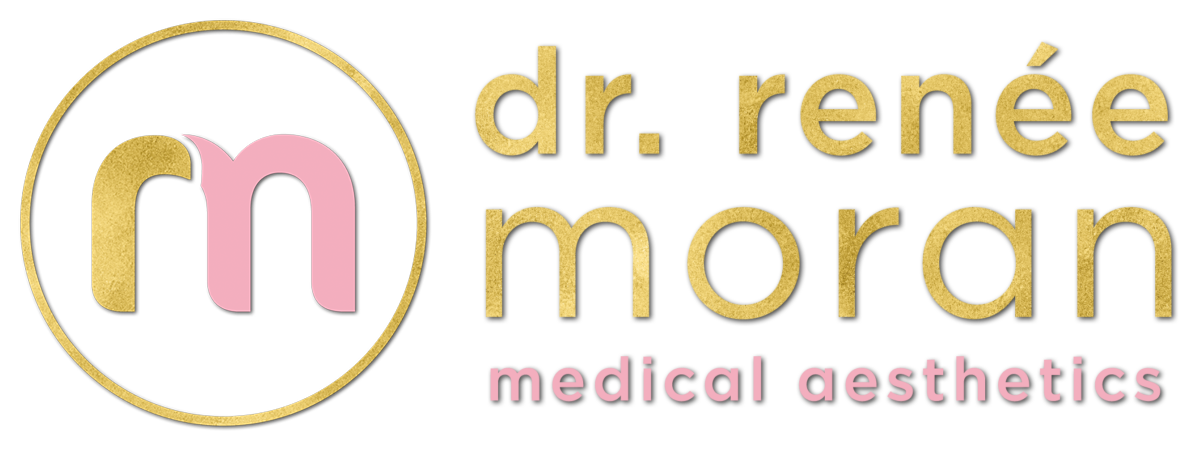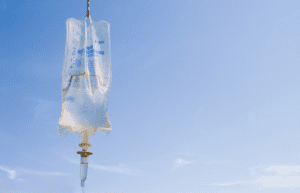You’ve probably heard of dermaplaning and wondered how on earth “shaving” can benefit your face. At Dr. Renée Moran Medical Aesthetics in Newton Centre, MA, we want to set the record straight: this treatment is far more than shaving, delivering a range of benefits that can brighten your complexion and improve your skincare regimen.
How Often Should You Get Dermaplaning?
The body is not designed to remain stagnant. Instead, it constantly renews itself for optimal functioning, and the skin is no exception. A new surface layer of skin is created roughly every 30 days, and in this process, dead cells are shed. The goal is to promote constant health, and while this process is fairly amazing, it’s also not infallible. Some dead cells remain on the surface longer than they should, clogging pores and creating rough patches.
It is therefore best, in most cases, to have dermaplaning done every four to six weeks, in line with your natural cell turnover rate. Most patients then repeat these sessions as part of an ongoing regimen; doing so keeps skin looking smooth, healthy, and vibrant.
More Frequent Sessions
In some instances, we will deliver treatment sessions two weeks apart, especially for patients preparing for an important event. After this initial uptick, we then generally recommend a traditional schedule of once monthly. This will vary slightly on an individual basis, as not all bodies renew skin cells at exactly 30 days. To illustrate, that window can be as little as 25 days or as much as 45 days for people under 40.
As you might have guessed, cell turnover slows with age so that a person in their 50s experiences cell renewal roughly every 50 days. Likewise, this timeframe increases to every 60 days for patients in their 60s. The point is we’ll develop a plan during your consultation to ensure we allow the appropriate healing time between each session.
Why is Healing Time Necessary?
Dermaplaning – also known as epiblading and a scalpel facial – is a deep exfoliation technique. Many women choose this treatment to remove the vellus hairs (peach fuzz) on their faces. The point of vellus is to keep us warm and protect our skin, but facial hair can contribute to acne and prevent skincare products from going to work. In other words, facial hair isn’t necessarily wanted, especially with modern conveniences like indoor heating.
As you already know, epiblading eliminates dead skin cells, and in so doing, reveals fresh, new cells that aren’t yet accustomed to environmental exposure. This means they’re fragile, and removing them before they’re ready can seriously impair your skin. We therefore stick to a treatment schedule that aligns with your individual needs.
What Happens During a Scalpel Facial?
The technique is simple: we hold a medical-grade scalpel to your skin at a 45-degree angle. Then, with a gentle gliding motion, we move the scalpel across your face to remove surface debris. This is a completely pain-free treatment that many patients report as feeling pleasant. And the fresh, cleansed feeling that follows means your skin is finally breathing as it needs to.
How is this Different from Shaving with a Traditional Razor?
Other hair removal methods like waxing and threading aren’t useful for removing fine vellus hairs – the hair isn’t coarse enough for these techniques to grip. Laser similarly requires several sessions before permanent results develop, and although it’s well-suited to those with darker hair, it doesn’t work as well on blonde hairs. The ideal option is epiblading, with effects that reach beyond the surface of your skin for a well-rounded treatment.
Why, then, isn’t an at-home razor good enough? Any blade you purchase from a local store won’t be as sharp as a medical-grade scalpel. As you’re forced to press harder to remove fine hairs, you put yourself at risk for cuts and nicks that may scar. Last but not least, a scalpel is highly maneuverable, able to skim your facial contours with little effort. A razor must be moved in one direction and cannot provide the same precision.
Goes Beyond Hair Removal
In addition, epiblading goes deeper than shaving. For starters, you see an immediate brightening effect on the skin. And in terms of aesthetic treatments, this is perhaps the quickest and simplest therapy available, helping to:
- Renew your complexion
- Minimize fine lines
- Reduce acne scarring
- Restore your glow
- Provide a softer texture
- Smooth away dry skin to promote hydration
What to Expect During Treatment
We’ll use your consultation to assess your skin and screen for conditions that could rule out treatment (such as cystic acne). Once we know epiblading is appropriate for your needs, we’ll start your sessions by thoroughly cleaning and prepping your face. We’ll then proceed with the scalpel, gliding it across your face so that you might feel a tingling sensation.
Once the entire face is treated, we apply any products that we previously agreed could benefit you. These might include a soothing serum or protective sunscreen. You can expect the entire treatment to take about 30 minutes, and there’s no recovery after, so you’re free to continue with your day. All in all, this is a highly effective way to refresh your appearance.
Preparing for Your Session
We generally recommend patients stop all anti-aging and topical acne treatments three days before their appointment. These include retinoids and products that contain alpha or beta hydroxy acids. You should likewise skip exposure to UV rays both before and after your treatment to minimize your risk for a reaction.
Finally, you shouldn’t wax or use depilatory creams at least one week prior to treatment; these techniques also lift away dead cells and make your skin too sensitive for dermaplaning. On the day of your treatment, you should arrive with a clean face free of product and makeup. If you have an active cold sore or active acne, your session will likely need to be rescheduled.
Your Appearance after Treatment
We already mentioned the brilliant glow your skin will have after treatment. Keep in mind that healthy, hydrated skin reflects light in a way that makes you look soft and luminous. Your skin will also look smoother without vellus and dead cells; both can dull your complexion and contribute to an overall fatigued look.
While your skin will likely be more sensitive for a few days, you can relieve this by applying hydrating serums and moisturizers, avoiding sweating, and delaying vigorous exercise or heat exposure. You can likewise promote rapid healing by keeping your hands off your face; don’t pick your skin and pat rather than wipe your face dry after cleansing. And don’t forget the broad-spectrum sunscreen, which needs to be applied daily to prevent sun damage.
Ways to Extend Your Results
Although peach fuzz will grow back after a few weeks, you can care for your skin in a way that helps maintain your silky smooth results. Keep in mind sun damage is one of the biggest contributors to premature aging and dull skin. The sun can diminish your skin’s brightness and contribute to wrinkles, fine lines, and dark spots. This is why, in addition to wearing sunscreen, we recommend you don a wide-brimmed hat when outside.
Also stay hydrated. Water is nature’s moisturizer and can reduce the appearance of fine lines. It also plumps skin and relieves excessive dryness. Not drinking enough can make skin look puffy and lackluster.
Complement with Other Treatments
For broader results, you may consider complementing epiblading with other therapies. Dermal fillers, for example, can smooth away deeper wrinkles and restore volume in key areas like the temples and cheeks. Neuromodulators can similarly relax muscles to diminish fine lines in the forehead and around the mouth. By pairing different treatments, you can enjoy an altogether more appearance.
Benefits of Epiblading
For many women, smoother makeup application is at the top of this list. From beauty blending sponges to pore-minimizing primers, we’re always looking for ways to get the most flawless finish possible. But the truth is this starts with our skin. Peach fuzz and patches of dry skin can interrupt makeup application and lead to a cakey, uneven appearance. Once we remove these factors from the equation, makeup is able to sit directly on the skin so it blends easily.
Better Product Penetration
Just as makeup can sit ineffectively on top of dead cells and facial hair, skincare products can do the same. The skin itself is a naturally waterproof barrier that can be tough to get past. This is a biological advantage to keep out harmful bacteria and toxins. But skincare products, which we want to penetrate to deeper tissues, have an especially difficult time squeezing past surface debris.
Removing skin’s top layer is a priority for ensuring effective skincare. Once it’s gone, products can sink into thirsty tissues and deliver the nutrients and hydration they need. This means you’re making the best use of all those moisturizers, serums, and deep cleansers you’ve purchased.
Fewer Acne Scars
Scars result from skin cell build-up following a unique pattern of inflammation. Epiblading can therefore remove these in much the same way as it sweeps away fine lines: by removing damaged cells and replacing them with those that are healthy. Although the efficacy of this depends on the severity of the scar and your overall complexion, we can at least reduce the appearance of scarring to give you smoother and more supple skin.
Acne scars benefit the most from dermaplaning; these concerns appear in the form of dark spots and enlarged pores and can develop at any age. The goal, then, is to help even out your tone so you look younger and more vibrant.
Collagen Production
Once we exfoliate your skin’s uppermost layer, we “trick” the body into thinking damage has occurred. This is important because it triggers natural healing mechanisms, which in this case means more collagen production. Collagen repairs the skin by lifting and plumping tissues. It also serves as the underlying structure that skin sits upon, giving your face its unique fullness and definition.
Collagen levels wane as early as age 25, so using cosmetic treatments to ramp up production can stave off and/or correct common signs of aging. It is especially beneficial for erasing fine lines and wrinkles.
A Multi-Faceted Facial
We rarely think of scalpels as delivering facials, but in the case of epiblading, they do just that. The effects are multi-faceted, ranging from a brighter complexion to fewer scars. It’s safe for nearly all patients, takes little time, and doesn’t require an arduous recovery period. Contact us today at Dr. Renée Moran Medical Aesthetics in Newton Centre, MA.




